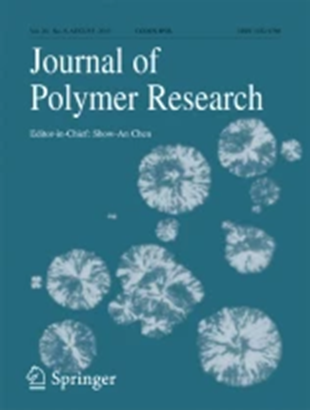摘要
开发了一种简便的连续流皮克林乳液光聚合工艺,用于制造聚合物/粘土复合微胶囊。使用堇青石纤维(PAL)作为微粒乳化剂,制备了水中油(单体、交联剂、Irgacure 819 和辛烷)的光柔性 Pickering 乳液。研究了影响微胶囊形成的一系列因素,如 PAL 浓度、光引发剂百分比、光照强度、交联剂/单体比率和单体类型。虽然 PAL 浓度越高,乳液越稳定,但通过 SEM 观察,3 wt% 的 PAL 为聚合物/PAL 微胶囊的形成提供了最佳条件。此外,研究还发现,6 wt% 的光引发剂和 2 mW/cm2 的辐照强度为聚合物/PAL 微胶囊的形成提供了最合适的光聚合条件。在不同的单体中,能形成具有适当柔韧性的聚合物的单体能更好地形成聚合物/PAL 球形微胶囊。此外,还提出了聚合物/PAL 微胶囊的形成机理。

A facile continuous flow Pickering emulsion photopolymerization process was developed to fabricate polymer/clay composite microcapsules. Photolatent Pickering emulsions of oil (monomer, crosslinker, Irgacure 819 and octane) in water were prepared using palygorskite fibers (PAL) as particulate emulsifier. Serials of factors on the formation of microcapsules have been investigated, such as PAL concentration, photoinitiator percentage, light intensity, crosslinker/monomer ratio and monomer type. Although the presence of higher PAL concentration provides the more stabile emulsion, 3 wt% of PAL offered the best condition to achieve polymer/PAL microcapsules by SEM observation. Further, it was found that 6 wt% of photoinitiator with 2 mW/cm2 irradiation intensity provided the most suitable photopolymerization conditions for the formation of polymer/PAL microcapsules. Among different monomers, the one that formed polymer with suitable flexibility offered better formation of polymer/PAL spherical microcapsules. Additionally, the formation mechanism of the polymer/PAL microcapsules has been proposed.

 求助内容:
求助内容: 应助结果提醒方式:
应助结果提醒方式:


